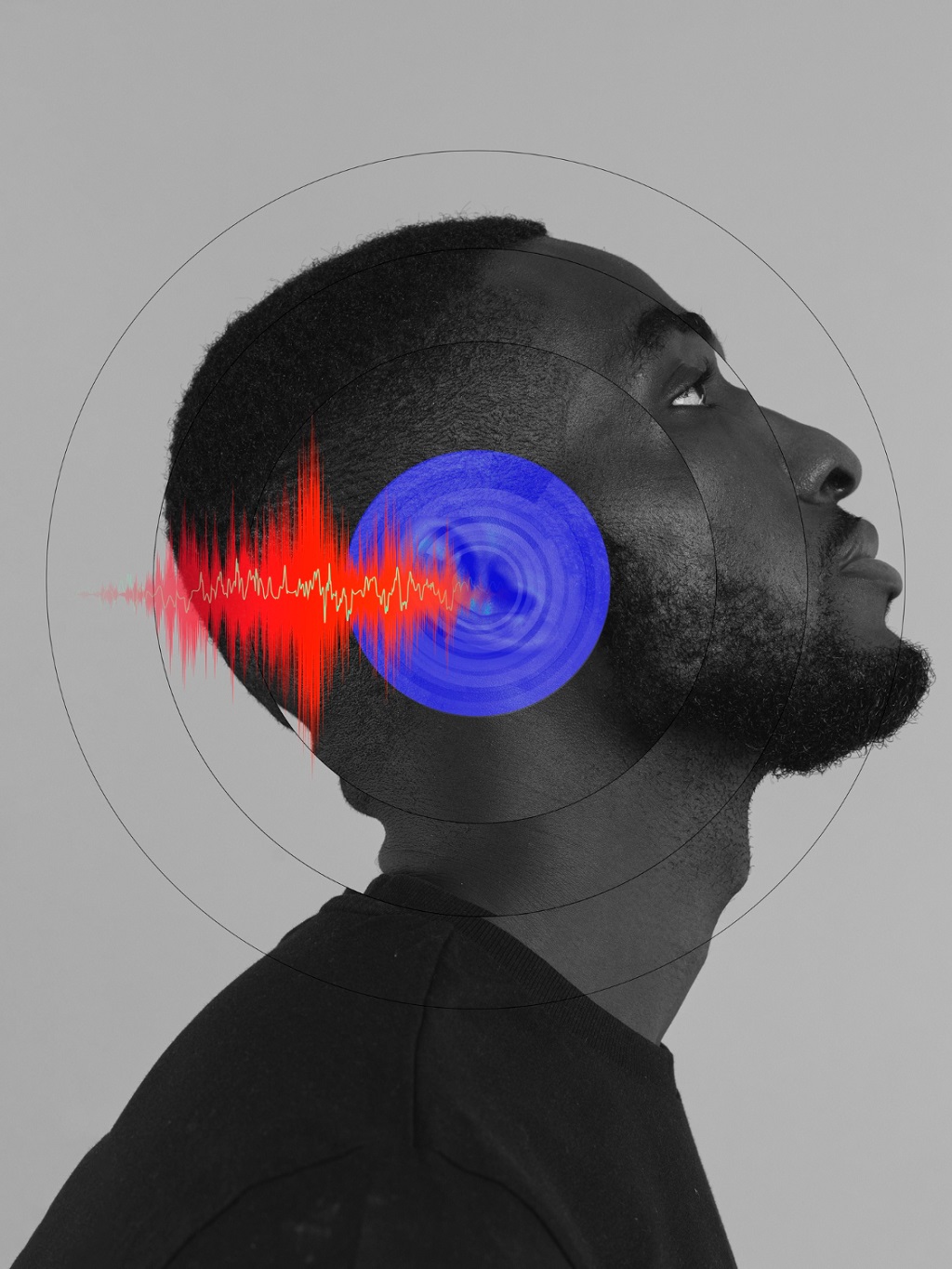Athletes have long recognized the power of music to enhance their performance and provide a boost of motivation. Whether it’s a pre-game ritual or a mid-workout jam, music has the ability to elevate an athlete’s mood and mindset, allowing them to tap into their full potential. When athletes listen to music that resonates with them, it can create a sense of focus and concentration, helping to block out distractions and channel their energy towards their performance. The rhythmic beats and melodies can synchronize with an athlete’s movements, enhancing their coordination and timing. Additionally, music has the power to evoke emotions and memories, allowing athletes to tap into their past successes or moments of triumph, boosting their confidence and self-belief. This psychological aspect of music can be particularly powerful in high-pressure situations, helping athletes to calm their nerves and perform at their best. Furthermore, music has the ability to stimulate the release of dopamine, a neurotransmitter associated with pleasure and reward. This surge of dopamine can create a sense of euphoria and increase an athlete’s pain tolerance, enabling them to push through physical barriers and achieve new heights. Moreover, music can serve as a distraction from fatigue or discomfort, helping athletes to stay in the zone and push past their limits. Whether it’s the energizing beats of hip-hop, the uplifting melodies of pop, or the adrenaline-inducing rhythms of rock, athletes have a wide range of musical genres to choose from depending on their personal preferences and the desired impact on their performance. Overall, music is a powerful tool that athletes can harness to enhance their performance, providing them with the mental and physical boost they need to excel in their chosen sport.

Motivation and Psychological Benefits
Motivation plays a crucial role in driving individuals towards their goals and aspirations, acting as a powerful force that fuels their actions and determines their level of success. It serves as the underlying force that propels individuals to overcome obstacles, persist in their endeavors, and achieve personal growth and fulfillment. Beyond its tangible effects on productivity and performance, motivation also offers a myriad of psychological benefits that contribute to overall well-being. When individuals are motivated, they experience a heightened sense of purpose and direction, leading to increased self-esteem and self-confidence. This positive self-perception allows individuals to navigate challenges with resilience and determination, ultimately leading to a greater sense of accomplishment and satisfaction.
One of the psychological benefits of motivation is the enhancement of mental health. When individuals are motivated, they experience a sense of purpose and meaning in their lives, which can combat feelings of emptiness or anxiety. Motivation provides individuals with a sense of control over their own lives, enabling them to take charge of their circumstances and make positive changes. This sense of control can reduce stress levels and promote a sense of well-being, as individuals feel empowered to pursue their goals and make progress towards them. Moreover, motivation can serve as a protective factor against mental health disorders such as depression and anxiety, as it fosters a positive mindset and resilience in the face of adversity.
Motivation also plays a crucial role in promoting personal growth and development. When individuals are motivated, they are more likely to engage in activities that promote learning and skill acquisition. Motivation acts as a driving force that propels individuals to challenge themselves, step outside their comfort zones, and acquire new knowledge and expertise. By continuously seeking personal growth and development, individuals can expand their horizons, discover new passions, and unlock their full potential. This process of continuous learning not only enhances individuals’ abilities and capabilities but also promotes a sense of fulfillment and self-actualization. Through the pursuit of personal growth, individuals can become more self-aware, develop a stronger sense of identity, and cultivate a deeper understanding of their values and beliefs.
Motivation also plays a crucial role in fostering positive relationships and social connections. When individuals are motivated, they exude a contagious energy and enthusiasm that attracts like-minded individuals. This shared motivation can lead to the formation of supportive networks and communities, where individuals can find encouragement, inspiration, and collaboration. Moreover, motivation can also enhance individuals’ interpersonal skills, as it promotes assertiveness, effective communication, and active engagement with others. These skills are essential for building and maintaining healthy relationships, both personally and professionally. By nurturing positive relationships and social connections, individuals can experience a sense of belonging and fulfillment, as they share their journey and accomplishments with others who understand and appreciate their efforts.
In conclusion, motivation goes beyond its tangible effects on productivity and performance, offering a multitude of psychological benefits. It enhances mental health by providing individuals with a sense of purpose, control, and resilience. Motivation also promotes personal growth and development, allowing individuals to expand their horizons, unlock their potential, and cultivate a deeper understanding of themselves. Furthermore, motivation facilitates the formation of positive relationships and social connections, fostering a sense of belonging and support. Therefore, harnessing and nurturing motivation is essential for individuals seeking personal fulfillment, happiness, and overall well-being.
Rhythm and Synchronization
Rhythm and synchronization are fundamental concepts that permeate various aspects of our daily lives, from music and dance to nature and human interactions. The essence of rhythm lies in the arrangement of sounds or movements in a patterned sequence, creating a sense of order and harmony. It is an innate quality that is present in all living beings, contributing to the cadence of our existence. Synchronization, on the other hand, refers to the coordination and alignment of different elements, be it individuals, systems, or processes, in a unified manner. Together, rhythm and synchronization form the backbone of numerous disciplines and endeavors, fostering unity, cohesion, and a deep sense of connection.
In the realm of music, rhythm is the driving force that propels melodies forward, providing structure and facilitating emotional expression. Whether it’s the steady beat of a drum, the pulsating bassline of a song, or the intricate interplay of various instruments, rhythm serves as the unifying element that brings disparate sounds together into a cohesive whole. It is through rhythm that musicians can create a sense of anticipation, tension, and release, evoking emotional responses in listeners. Moreover, rhythm enables individuals to synchronize their movements, allowing for coordinated dances, marches, or even the synchronization of various musicians during a live performance. The power of rhythm and synchronization in music is undeniable, as it transcends cultural boundaries and speaks to the universal language of the human experience.
Beyond the realm of music, rhythm and synchronization are also deeply ingrained in the natural world. In the animal kingdom, for instance, many species exhibit synchronized behaviors that are crucial for survival. Flocks of birds gracefully maneuver through the sky in perfect unison, schools of fish elegantly swim in synchrony, and insects such as fireflies emit light patterns that synchronize with their peers. These remarkable displays of rhythm and synchronization not only serve as a means of communication but also enhance collective efficiency and protection against predators. Nature, in its infinite wisdom, has perfected the art of rhythm and synchronization, demonstrating the beauty and effectiveness of coordinated efforts.
In the realm of human interactions, rhythm and synchronization play an essential role in fostering social cohesion and cooperation. When people engage in conversation, rhythmic patterns emerge in the form of turn-taking and the synchronization of gestures, facial expressions, and vocalizations. These rhythmic exchanges create a sense of mutual understanding and empathy, facilitating effective communication and building stronger connections between individuals. Furthermore, in activities such as team sports, dance, and even everyday tasks, synchronization is paramount for achieving success. Whether it’s the synchronized movements of a rowing team, the intricate footwork of a dance ensemble, or the harmonious collaboration of coworkers, rhythm and synchronization create a shared sense of purpose and enable individuals to work together towards a common goal.
In conclusion, rhythm and synchronization are integral aspects of our lives, permeating various domains and contributing to the fabric of human existence. From the harmonious melodies of music to the synchronized behaviors of nature and the coordinated interactions between individuals, rhythm and synchronization foster unity, cohesion, and connection. They enable us to express ourselves, communicate effectively, and work together towards shared objectives. Whether consciously or unconsciously, we are constantly attuned to the rhythms surrounding us, and through synchronization, we find a profound sense of harmony and collective purpose.

Distraction and Pain Management
Distraction plays a pivotal role in the realm of pain management, offering individuals a valuable tool to alleviate discomfort and enhance their overall well-being. By diverting attention away from the source of pain, individuals can experience a reduction in the intensity and perception of their suffering. Whether it be through engaging in enjoyable activities, practicing mindfulness techniques, or utilizing various forms of therapeutic interventions, distraction has proven to be an effective strategy for pain management. This approach capitalizes on the brain’s ability to focus on alternative stimuli, effectively shifting the individual’s attention away from the physical sensations of pain. Consequently, distraction not only offers temporary relief but also empowers individuals to take an active role in their pain management journey, promoting a sense of control and improved quality of life.
One of the most common and accessible methods of distraction is engaging in pleasurable activities. By immersing oneself in activities that bring joy and happiness, individuals can divert their attention away from pain and focus on the positive experiences in their lives. Engaging in hobbies such as painting, playing a musical instrument, or even simply spending time with loved ones can provide an effective distraction from pain. These activities not only provide an enjoyable escape but also stimulate the release of endorphins, the body’s natural pain-relieving hormones. The pleasurable sensations experienced during these activities can help individuals shift their attention away from pain, allowing them to experience temporary relief and an improved overall mood.
Mindfulness techniques have also been proven effective in pain management, utilizing the power of focused attention to alleviate discomfort. Mindfulness involves intentionally and non-judgmentally attending to the present moment, allowing individuals to observe their pain without becoming overwhelmed by it. Through practices such as meditation or deep breathing exercises, individuals can redirect their attention to the sensations of breathing or other focal points, effectively reducing their perception of pain. By cultivating a state of mindfulness, individuals can learn to acknowledge their pain without becoming consumed by it, thereby diminishing its impact on their daily lives.
Therapeutic interventions also offer a range of distraction techniques to manage pain effectively. For instance, cognitive-behavioral therapy (CBT) helps individuals reframe their thoughts and beliefs about pain, enabling them to adopt a more positive and adaptive mindset. By challenging negative thoughts and replacing them with more realistic and positive ones, individuals can reduce the intensity of their pain experience. Additionally, therapies such as virtual reality (VR) or guided imagery can transport individuals to alternative environments or scenarios, effectively diverting their attention away from pain and providing a temporary respite. These interventions capitalize on the brain’s capacity to process and engage with new stimuli, effectively overriding the pain signals and reducing their impact on the individual’s well-being.
In conclusion, distraction is a valuable and effective tool in pain management, offering individuals a means to alleviate their discomfort and enhance their overall quality of life. By engaging in pleasurable activities, practicing mindfulness techniques, or utilizing therapeutic interventions, individuals can effectively shift their attention away from pain and redirect it towards more positive and fulfilling experiences. Distraction not only provides temporary relief but also empowers individuals to take an active role in their pain management journey, promoting a sense of control and improved well-being. As research continues to explore the intricate connection between distraction and pain management, it is evident that this approach holds significant promise in alleviating suffering and enhancing the lives of individuals facing various forms of pain.
Focus and Concentration
Focus and concentration are essential abilities that allow individuals to direct their attention and energy towards a specific task or goal. These cognitive skills enable individuals to be fully present and engaged in their activities, enhancing productivity and overall performance. When one is focused, their mind becomes clear and undistracted, enabling them to immerse themselves in their work or studies. Concentration, on the other hand, involves the ability to maintain attention for extended periods, even in the face of potential distractions. Both focus and concentration are valuable skills that can be developed and improved through practice and various techniques.
Developing focus and concentration requires discipline and a conscious effort to eliminate distractions. In today’s digital age, where technology and social media constantly vie for our attention, it can be challenging to maintain focus on a single task. However, by creating an environment conducive to concentration, individuals can increase their ability to focus. This may involve finding a quiet space, turning off notifications on electronic devices, and establishing a dedicated work area. Additionally, setting clear goals and breaking tasks into smaller, manageable chunks can help maintain focus and prevent feelings of overwhelm.
One effective technique for improving focus and concentration is mindfulness meditation. This practice involves bringing one’s attention to the present moment, observing thoughts and sensations without judgment. By training the mind to stay present, individuals can reduce the tendency for their thoughts to wander and improve their ability to concentrate on the task at hand. Regular meditation sessions can also enhance overall mental clarity and resilience, making it easier to maintain focus in various situations.
Another strategy to enhance focus and concentration is through physical exercise. Engaging in regular physical activity increases blood flow to the brain, promoting cognitive function and improving focus. Exercise also releases endorphins, which boost mood and enhance motivation. Taking short breaks during work or study sessions to engage in physical movement, such as stretching or walking, can help refresh the mind and maintain concentration throughout the day.
In addition to these techniques, establishing a consistent routine and prioritizing tasks can also contribute to improved focus and concentration. By organizing one’s schedule and allocating specific time slots for different activities, individuals can train their minds to focus during those designated periods. This helps create a sense of structure and eliminates the need to constantly make decisions about what to focus on next. Furthermore, maintaining a healthy lifestyle through proper nutrition, adequate sleep, and stress management can significantly optimize cognitive function and enhance concentration abilities.
Ultimately, focus and concentration are invaluable skills that can be developed and refined with practice. By adopting strategies such as creating a conducive environment, practicing mindfulness meditation, engaging in regular physical exercise, establishing routines, and maintaining a healthy lifestyle, individuals can enhance their ability to stay focused and concentrated. These skills can lead to increased productivity, improved performance, and a greater sense of fulfillment in various aspects of life. As with any skill, consistent practice and perseverance are key to mastering focus and concentration and reaping the numerous benefits they offer.

Emotional Regulation and Visualization
Emotional regulation and visualization play integral roles in our daily lives, shaping the way we perceive and respond to the world around us. These processes are fundamental tools that enable individuals to effectively manage their emotions and enhance their overall well-being. Emotional regulation refers to the ability to understand, manage, and express emotions in a healthy and constructive manner. It involves recognizing and acknowledging one’s feelings while also regulating their intensity and duration. Visualization, on the other hand, involves the creation of mental images and scenarios to evoke specific emotions or desired outcomes. Through the power of imagination, individuals can harness the potential of visualization to achieve emotional balance and personal growth.
Emotional regulation is a skill that allows individuals to navigate life’s challenges with resilience and adaptability. By understanding and managing their emotions, individuals can avoid impulsive reactions and make more rational decisions. This process begins with self-awareness, where individuals recognize and acknowledge their emotions without judgment. It is crucial to identify and validate these emotions, as denying or suppressing them can result in further distress. Once emotions are acknowledged, individuals can then employ strategies to regulate them effectively. These strategies may include deep breathing exercises, engaging in physical activity, or seeking support from trusted individuals. Emotional regulation empowers individuals to take control of their emotional well-being and fosters healthier relationships with others.
Visualization, on the other hand, taps into the power of the mind to create mental images that evoke certain emotions or desired outcomes. This technique has been used for centuries to enhance performance, reduce anxiety, and improve overall well-being. By vividly imagining positive scenarios or desired outcomes, individuals can generate and amplify positive emotions. For instance, athletes often employ visualization techniques to mentally rehearse their performances, increasing their confidence and enhancing their physical capabilities. Visualization can also be used as a tool for relaxation and stress reduction. By creating mental images of peaceful and serene environments, individuals can evoke a sense of calmness and tranquility within themselves. Moreover, visualization can be employed to manifest desired goals and aspirations. By consistently visualizing oneself achieving a specific goal, individuals can align their thoughts and actions towards its realization.
The practice of emotional regulation and visualization often go hand in hand, as visualization can be used as a tool to enhance emotional regulation. When faced with challenging emotions, individuals can visualize alternative scenarios or positive outcomes to reframe their perspective. By consciously creating mental images of a positive resolution or a more desirable emotional state, individuals can effectively regulate their emotions and alleviate distress. For example, if someone is feeling overwhelmed and anxious about an upcoming presentation, they can visualize themselves delivering the presentation with confidence and receiving positive feedback. This visualization can help reduce anxiety and increase self-assurance, enabling the individual to perform at their best.
In conclusion, emotional regulation and visualization are powerful tools that contribute to our overall emotional well-being. By effectively managing and expressing our emotions, we can navigate life’s challenges with resilience and make more rational decisions. Visualization, on the other hand, allows us to tap into the power of our imagination to evoke specific emotions or desired outcomes. When used together, emotional regulation and visualization can enhance our ability to regulate our emotions, reduce stress, and achieve personal growth. By incorporating these practices into our daily lives, we can cultivate emotional balance and lead a more fulfilling and purposeful life.
Team Cohesion and Atmosphere
Team cohesion and atmosphere play a crucial role in the success and productivity of any group or organization. It refers to the level of unity, cooperation, and positive energy within a team. When individuals within a team share a sense of purpose and work towards a common goal, the team’s performance tends to be exceptional. A strong team cohesion fosters a supportive and inclusive environment that encourages collaboration, trust, and effective communication. Such an atmosphere allows team members to feel valued, motivated, and comfortable, which ultimately leads to higher levels of productivity and job satisfaction. Moreover, a positive team atmosphere also facilitates creativity and innovation, as team members feel more comfortable expressing their ideas and taking risks. In contrast, a lack of cohesion and a negative atmosphere can lead to conflicts, lack of motivation, and decreased productivity. Therefore, it is essential for team leaders to consistently nurture and promote a healthy team cohesion and atmosphere to ensure the team’s success and overall well-being.

Personalization and Individual Preferences
Personalization and individual preferences have become integral aspects of our modern society. In today’s interconnected world, people are more empowered than ever to tailor their experiences according to their unique tastes and desires. From streaming services that recommend content based on our viewing history to online retailers that suggest products based on our previous purchases, personalization has revolutionized the way we interact with technology and consume goods and services. This shift towards customization has not only enhanced the convenience and efficiency of our daily lives but has also fostered a sense of empowerment and ownership over our choices.
One of the key advantages of personalization is the ability to curate our online experiences. Social media platforms, for instance, allow us to define our preferences and interests, thereby enabling algorithms to present us with content that aligns with our individual tastes. This targeted approach ensures that we are exposed to information, news, and updates that are relevant to us, while avoiding the clutter of irrelevant or uninteresting content. This personalized curation enhances our online experience by saving us time and effort, allowing us to focus on what truly matters to us.
Moreover, personalization extends beyond the realm of technology and into various other aspects of our lives. In the realm of fashion, for example, the rise of customizable clothing and accessories has allowed individuals to express their unique style and personality. From designing custom sneakers to creating personalized jewelry, consumers now have the opportunity to wear items that truly reflect their individuality. This shift towards personalization in fashion not only promotes self-expression but also challenges the notion of conformity, encouraging individuals to celebrate their distinctiveness rather than conform to societal norms.
In the realm of entertainment, personalization has transformed the way we consume media. Streaming services such as Netflix and Spotify employ sophisticated algorithms that analyze our viewing or listening habits to recommend content tailored to our preferences. This level of personalization ensures that we are presented with a range of options that resonate with our tastes, allowing us to discover new shows, movies, or music that we may not have otherwise encountered. By catering to our individual preferences, these platforms enhance our overall entertainment experience, making it more enjoyable and fulfilling.
Furthermore, personalization has also made its way into the realm of healthcare. With advancements in technology, medical professionals can now personalize treatment plans based on an individual’s genetic makeup, medical history, and lifestyle choices. This tailored approach to healthcare not only improves patient outcomes but also enhances the overall patient experience. By considering an individual’s unique circumstances and preferences, healthcare providers can ensure that treatments are more effective, leading to better patient satisfaction and overall well-being.
However, it is essential to strike a balance between personalization and privacy. While personalization enhances our experiences, it also raises concerns about the level of data collection and surveillance. The information we provide to customize our experiences is stored and analyzed, raising questions about data security and potential misuse. It is crucial for individuals and organizations to prioritize privacy and ensure that personalization is implemented ethically and transparently, respecting the boundaries between customization and intrusion.
In conclusion, personalization and individual preferences have transformed various aspects of our lives, from online experiences to fashion, entertainment, and healthcare. This shift towards customization empowers individuals to curate their own experiences, expressing their unique tastes and preferences. However, it is important to approach personalization with caution, considering the implications for privacy and data security. Finding the right balance between personalization and privacy is crucial for ensuring that this technological advancement continues to enhance our lives without compromising our fundamental rights and values.
Conclusion
In conclusion, it is evident that the outcome of any situation heavily relies on the choices made and actions taken. The finality of a conclusion serves as a culmination of all the preceding events, thoughts, and efforts. It is the point at which one can reflect upon the journey that has led them to this point and evaluate the lessons learned. A conclusion provides closure, allowing individuals to move forward with newfound knowledge and understanding. It signifies the end of a chapter, while also presenting an opportunity for new beginnings. Moreover, a conclusion can be seen as a resolution, where conflicts are resolved, and resolutions are reached. It is a moment of clarity, where confusion dissipates and clarity takes its place. Additionally, a conclusion can serve as a catalyst for growth and personal development. It offers the chance to critically analyze one’s choices and actions, identifying areas for improvement and opportunities for growth. It is through the process of reaching a conclusion that individuals can gain insight into their own strengths and weaknesses, enabling them to make better decisions in the future. Furthermore, a conclusion can also be seen as a testament to perseverance and determination. It is a testament to one’s ability to overcome obstacles and challenges, demonstrating resilience and tenacity. The conclusion serves as a reminder that despite setbacks and hardships, success can still be achieved through perseverance and a positive mindset. Lastly, a conclusion can be viewed as a time for celebration and reflection. It allows individuals to celebrate their achievements and milestones, acknowledging the hard work and dedication that went into reaching this point. It is an opportunity to express gratitude and appreciation for the support and guidance received along the way. Moreover, a conclusion provides a chance for reflection, enabling individuals to learn from their experiences and make informed decisions in the future. In conclusion, the significance of a conclusion lies in its ability to provide closure, resolution, growth, perseverance, and celebration. It is a powerful moment that marks the end of one chapter and the beginning of another. Through reflection and analysis, individuals can harness the lessons learned and use them as stepping stones towards a brighter future.


